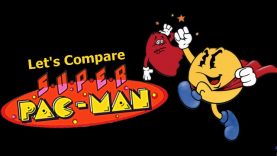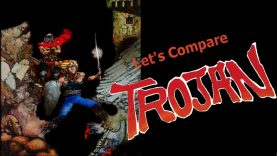Let’s Compare ( Time Pilot )
Gaming History Source
Visit Kristof’s web site here !! Where you can order this Vectrex game & much more !!
http://www.kristofsnewvectrexgames.co…
Unfortunately, the PARAJVE emulator that I am using doesn’t emulate the sound effects properly, compared to the game running on the real vectrex. For your info, the author of PARAJVE knows about this issue. The MESS emulator performs much better on the level of sound-effects. Especially the player bullet shots and the enemy explosions are not the same as on the real thing. To get the best experience, the vectrex port should be played on the actual hardware.
https://www.facebook.com/GamingGeeks/…
Patreon
https://www.patreon.com/ghs?ty=h
1. Arcade 0:35
2. Atari 2600 3:18
3. Colecovision 6:00
4, MSX 8:44
5. Sharp X68000 11:28
6. Gameboy Advance 13:26
( Konami Arcade Advance )
7. Nintendo DS 16:10
( Konami Classics Series )
8. Playstation 18:52
( Konami Arcade Classics )
9. Vectrex 21:35
( Vector Pilot )
Description Source:
https://en.wikipedia.org/wiki/Time_Pilot
Time Pilot (夕イム・パイ口ツ卜) is a multi-directional scrolling shooter and free-roaming aerial combat arcade game designed by Yoshiki Okamoto, released by Konami in 1982, and distributed in the United States by Centuri. Debuting in the golden age of video arcade games, it is a time travel themed game that allowed the player’s plane to freely move across open air space that can scroll indefinitely in all directions. The Killer List of Videogames included Time Pilot in its list of top 100 arcade games of all time.[
A sequel, 1984, Time Pilot ’84, was released a few years after the original. It has a top down view instead of a side view and takes place over a science fiction-themed landscape.
Overview
The player assumes the role of a pilot of a futuristic fighter jet, trying to rescue fellow pilots trapped in different time eras. The player must fight off hordes of enemy craft and defeat the mother ship (or “boss”) present in every level. The background moves in the opposite direction to the player’s plane, rather than the other way around; the player’s plane always remains in the center.













